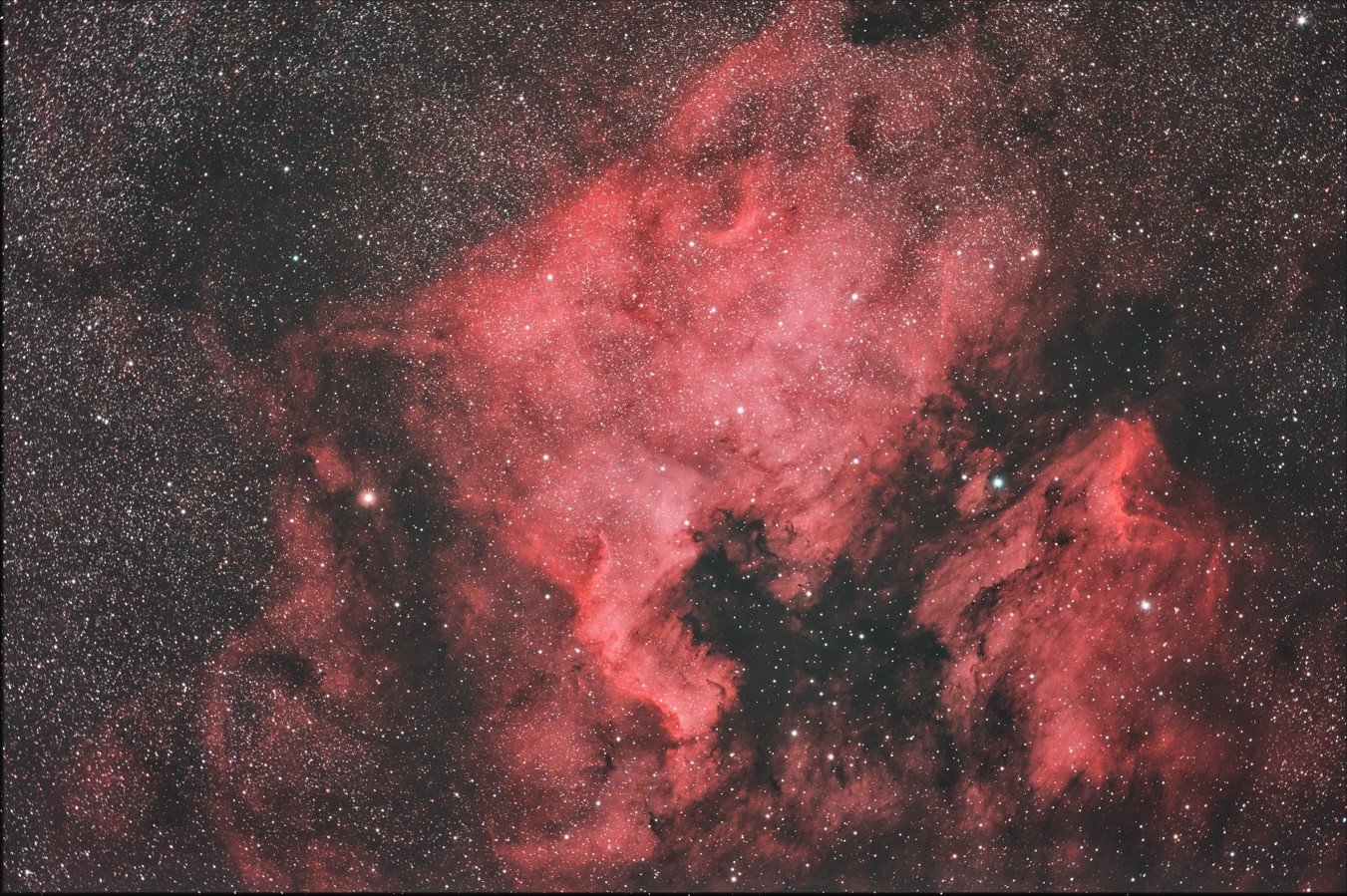
Discovery of the M31 [OIII] emission arc
Recently, a major discovery by an international team of amateur astronomers and scientists has become a huge online hit, and this new discovery is just located in one of the

When I started astrophotography four years ago in high school, I used DSLR 760 D. It was convenient as it can be used daily, but the quality of astronomical photos was not so good. Since using ZWO’s CMOS camera, I’ve been able to take astronomical photos of the quality I wanted to take. When I tested the ASI2400MC Pro, I was very surprised at its ease of shooting and image processing. Backside illuminated sensors and zero amp glows are also found in other ZWO products. And they are just as wonderful as many of ZWOer’s amazing images show. What should be noted this time is a pixel size of 5.94 μm and a saturated charge amount of up to 100ke. At big pixel size, the photosensitive area is very large, and it is suitable for astrophotography where the photosensitive performance is very important. The ASI2400MC Pro, by combining the conventional backside illumination technology and anti-amp glow, achieves high sensitivity with a peak QE of 80% or higher and low noise of 1.1e for minimum read noise. The well depth capacity of ASI2400MC Pro is 100ke, which is 132% of another full frame ASI camera ASI128MC Pro, it is able to take photograph without halation of bright stars and nebulae despite its high sensitivity.
The number of pixels of this sensor is 24 MP, which is considerably smaller than that of ASI6200MM/MC. However, it is considered that the monitor used by an individual is up to 4K (about 8 MP). Therefore, the specifications are probably sufficient unless a person prints in A1 or A2 size. In addition, it is advantageous in image processing such as improvement in processing speed and reduction in necessary specifications of a PC. In fact, I did image processing on my MacBook Pro and it went smoothly.

The North American Nebula and the Pelican Nebula that I took with the f/5.3 refracting telescope this time without guiding were processed from the 57 images*1 minute taken with the live stack image using ASIAIR PRO. I did not feel any lack of exposure at all. Therefore, the processing of the image took less than one hour and was very comfortable. The quality of the as-captured live stack image confirmed at the observation site was as if it had been processed. The dark nebula is clearly visible thanks to the ASI2400MC Pro’s excellent high sensitivity and low noise. As a result of using this camera, I think it will be easy to photograph molecular clouds.
Image Data:
Frame: 57*1min
Imaging Telescope: Takahashi FSQ85ED
Imaging Camera: ZWO ASI2400MC Pro
Filter: ZWO Duo band filter 2”
Mount: iOptron CEM40
Accessories: ZWO ASIAIR PRO, EAF
Date: 2020/05/30
Place: Chiba Prefecture, Japan

Recently, a major discovery by an international team of amateur astronomers and scientists has become a huge online hit, and this new discovery is just located in one of the

Why the Orion Nebula Never Gets Old – Each winter, stargazers return to this cosmic masterpiece to test new skills and relive the wonder. Explore the Orion region’s iconic nebulas,

In 1994, I built my first fully functional reflecting telescope in Hungary with my own hands. In the former Eastern Bloc countries, telescopes still could not be purchased in stores

1.How It All Began I have been a fan of astronomy since high school.Starting from a school event where I can see the moon up close through a telescope.When I

1. How It All Began For Puig Nicolas, it all started at the age of 10 with a 60/700 refractor and a 114/900 reflector. His first celestial encounters — the

By day, David Cruz works as a digital designer. By night, he designs something far greater — images of the universe itself. “Since I was young, I was always interested
6 Comments
Frank White
I want to use a asiair on my MeadeLx 85 mount, is this possible?
Thanks Frank
Katherine Tsai
Yes, it is supported.
Jim Anderson
Very nice review. Any chances a monochrome version will be made available?
ZWO.Moson
Thank you. We currently don’t have this plan, you can keep an eye on our website.
johnlagerling
I just ordered one from your site. Do you have a rough sense for when inventory will be available again? Thank you.
sara.liu
May I have your order number?